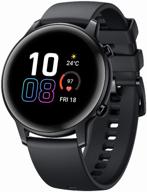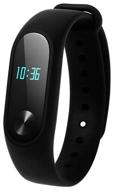
Review on 📷 Sony a7R II Full-Frame Mirrorless Camera (Body Only, Black) - ILCE7RM2/B: Unbeatable Quality & Versatility by Edwin Cen

Great powerhouse
This camera is very comfortable to walk around but not as discreet as my RX1R II. The body is solid if a bit small and I find my pinky dangling in the air , so I use it to support my lower body. My middle and ring fingers hold the small front handle (which is handy), and my index finger is between the shutter button and the shutter speed dial (more on that below). There's a small ledge on the back that sits my thumb comfortably and provides quick access to the bezel dial. The RX1R II has a slightly different grip that makes it smaller but not as small - perhaps the lack of a bulbous grip on the front of the RX1R II. I like the layout of the buttons and dials on this camera. They're solid and easy to use - and those that need to snap into place do, too. Currently, if the camera is always in manual (M) mode, I have a front dial to set shutter speed, a rear dial to set aperture, and a button on the back to set ISO on the fly. A single click of the button brings up the ISO menu, and I can use the thumbwheel to quickly scroll to my desired rating. The only other button programmed so far is C1 for eye detection. Apparently only used in portraits, but it seems to hit every time. I'm using the same setup on the RX1R II. I'm using the exposure compensation dial more and more to get the exact exposure I want, rather than relying on a post to fix it. Also, I now rely almost exclusively on the histogram in the viewfinder to show my work. The shutter button is smooth and comfortable (and I love the sound of it), and there's a silent shutter option too, although I haven't tried that. SONY A7R II - SENSOR The A7R II features a back-illuminated 35mm full-frame 42.4-megapixel Exmor R CMOS sensor and a BIONZ-X image processor supporting 14-bit uncompressed RAW images . Technically an ISO range of 50-102400, but realistically ISO 100-25600. Even more realistic for my style is ISO 100-6400. Unlike my RX1R II, this camera doesn't have an optical low-pass filter. MP sensor. This system corrects for camera shake in 5 axes: angular jitter (pitch and yaw), offset jitter (along the x/y axis), and rotational jitter (roll). Combine this with an IS lens (like the Zeiss Batis 85 I use) and you can shoot extremely low light. My best suggestion is to put the camera in airplane mode - this will disable all WiFi and network scanning. This switch allows me to shoot all day with 3 batteries ready to go. To be honest, I shoot so little (200-300 photos max) on a typical day that I rarely need to go to a backup. Some other things to try are lowering the brightness in the monitor and viewfinder and shorting out the power supply. Save time, turn off Sunny weather option, turn off beeps and turn off Pre-AF. When walking between shots, I also try to turn the camera off. Not sure how much that will help, but a habit I picked up with the RX1R II. I also suggest having some backup batteries and some chargers at home. At the moment I have 2 standard Sony batteries and 2 non-branded batteries. I didn't notice much difference between them. I keep a few chargers at home as these batteries seem to take forever to charge. At least with a pair I can halve the loading time. VIEWFINDER / SCREEN There are several ways to compose images with the A7R II. Either via the screen on the back of the camera with LiveView or via the electronic viewfinder (EVF), it's really a godsend. The camera has the intelligence to automatically turn on only the view you are using. In LiveView, EVF is disabled. When you look at the electronic viewfinder, it fires instantly and turns off the rear pane. As mentioned above, very good for a camera that eats battery. You can increase or decrease the resolution in each of these modes, although both look very good in the default mode. Very bright and very responsive. Almost identical to what I said about the RX1R II and not like the LiveView of the past (which is where my last experience was with the slow Sony NEX-3). I keep the rear screen fairly dark, so I like to use the viewfinder to view images when needed. Incidentally, the eyecup on the A7R II's viewfinder is significantly better than the RX1R II's. The former is a proper viewfinder with a rubberized eyecup (see the A7R II's rear image below in My Default Settings) and the latter is a pop-up EVF and doesn't offer any at all Pupillary distance. Both screens offer a lot of data. from shutter speed, ISO, aperture to digital levels, histograms and so on. I won't bore you with all the goodies, but there are plenty of things you can add or remove from each screen. The rear screen tilts up and down, which is nice to hold over your head or under your feet to get a decent shot. I don't use the screen often, but I really like being able to compost the shot this way when I need it. I think it could be a stealthy way of composing a shot where others don't know what you're doing if stealth is your motive. The modes available here are single, continuous and manual focus, as well as AF-A and DMF modes that can be used with native FE glass. Since I don't tend to shoot moving targets, I almost always use single shot mode and found it to be fairly quick and very accurate. Medium range (my preference), flexible spot, extended universal spot, lock-on AF, extended spot AF, lock-on AF, eye AF (which I matched with the C1) and face detection. As with the Sony RX1R II, files get me confused. You have a lot of wiggle room and so much detail in the shadows. IQ is really pleasant to work with and I understand how they handle my one-click edits. not to love it I have film cameras that I am more than happy with and my Sony RX1R II which I felt was all I needed. I wanted to take it off, throw it out of my system, and then put it back in. Well you won't go back. When I put on the Zeiss Batis 85 and started walking around with the Sony A7R II, I was blown away. This camera really offers everything I currently expect from a digital setup. Great files with colors I love great speed and fun to walk. I've read complaints about the menu system, but once you've set it up you don't have to bother much and it really isn't that bad. kudos to the Sony RX1R II - so yes, they both remain. I plan to use a lot of this over the year and revisit this review with thoughts on the future, usage, issues or whatever.
- Sleek design
- Long delivery time
New products
Comments (0)
Top products in 📷 Digital Cameras
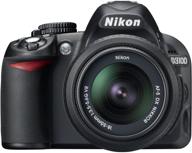
Nikon D3100 DSLR Camera with Auto Focus-S Nikkor Zoom Lens (Discontinued by Manufacturer)

109 Review
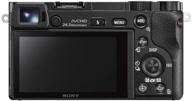
Revamped Sony Alpha a6000 Mirrorless Digital Camera: 24.3MP SLR Camera with 3.0-Inch LCD and Power Zoom Lens

103 Review

Nikon D3100 DSLR Camera Body (Kit Box) - No Lens Included, International Version with No Warranty

298 Review
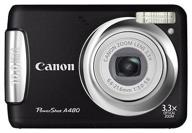
Canon PowerShot A480 camera, black

108 Review


